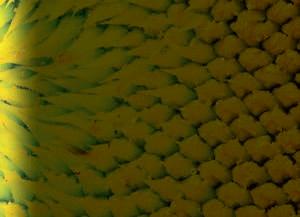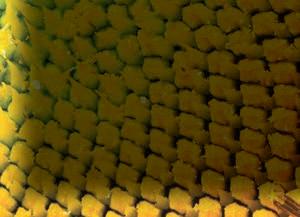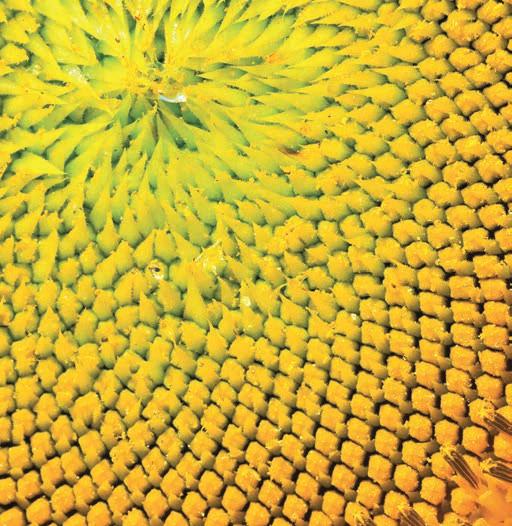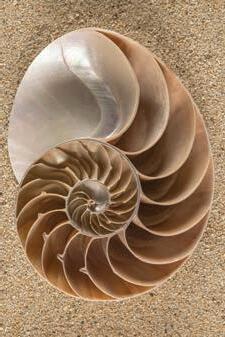MATHS
fifth edition
Higher Student Book
Kevin Evans
Keith Gordon
Trevor Senior
Brian Speed
Michael Kent
Algebra: Number and sequences

This chapter is going to show you:


• how to recognise rules for sequences


• how to express a rule for a sequence, in words and algebraically
• how to generate the terms of a linear and quadratic sequence, given a formula for the nth term
• some common sequences of numbers.
You should already know:
• how to substitute numbers into an algebraic expression


• how to nd the nth term of a linear and quadratic sequence
• how to state a rule for a simple linear sequence in words
• how to factorise simple linear expressions
• how to expand a pair of linear brackets to get a quadratic expression.
Context and careers






Mathematicians enjoy nding patterns. You have already seen patterns in sequences such as square numbers, cube numbers and multiples. Patterns can be numerical or geometrical and are useful in the study of nature. Of the many mathematical patterns found in nature, the most famous is probably the Fibonacci series, in which each term after the second is formed by adding the two previous terms: 1, 1, 2, 3, 5, 8, 13, 21, …. The sequence was discovered by the Italian, Leonardo Fibonacci, in 1202, when he was investigating the breeding patterns of rabbits! Since then, the pattern has been observed in many other contexts in nature, for example, the spirals found in a nautilus shell and in the seed heads of a sun ower plant follow the Fibonacci series. Careersthatusethismaths







• Game developers use mathematical sequences when creating animations to control the movement of objects or characters on the screen.
• Modelling and simulation engineers use mathematical sequences to create simulations that model the movement and behaviour of physical phenomena, such as the weather.




4.1 Patterns in number
This section will show you how to:
• recognise patterns in number sequences.
Look at these number patterns.
0 × 9 + 1 = 1

Key terms pattern sequence
1 × 8 + 1 = 9
1 × 9 + 2 = 11 12 × 8 + 2 = 98
12 × 9 + 3 = 111 123 × 8 + 3 = 987
123 × 9 + 4 = 1111
1234 × 8 + 4 = 9876
1234 × 9 + 5 = 11 111 12345 × 8 + 5 = 98 765
1 × 3 × 37 = 111 7 × 7 = 49
2 × 3 × 37 = 222 67 × 67 = 4489
3 × 3 × 37 = 333 667 × 667 = 444 889
4 × 3 × 37 = 444 6667 × 6667 = 44 448 889
The numbers form a sequence. Check that the patterns you can see are correct, then try to continue each pattern without using a calculator. Check them with a calculator afterwards. Spotting patterns is an important part of mathematics. It helps you to see rules for making calculations.
Exercise 4A
In questions 1 to 6, look for the pattern and then write the next two lines. Check your answers with a calculator afterwards.
You might nd that some of the answers are too big to t in a calculator display. This is one of the reasons why spotting patterns is important.

Hints and tips Look for symmetries in the number patterns.
1a 1 × 1 = 1
9 × 9 = 81 11 × 11 = 121 99 × 99 = 9801 111 × 111 = 12 321 999 × 999 = 998 001 1111 × 1111 = 1 234 321 9999 × 9999 = 99 980 001
2a 3 × 4 = 32 + 3 b 10 × 11 = 110 4 × 5 = 42 + 4 20 × 21 = 420 5 × 6 = 52 + 5
× 31 = 930 6 × 7 = 62 + 6
× 41 = 1640

Hints and tips
Think of the answers to 2b as 1 10, 4

Use your observations on the number patterns in questions 1 to 5 to answer question 6 without using a calculator.

Hints and tips Look for clues in the patterns from questions 1 to 5, for example, 1111 × 1111 = 1 234 321. This is four 1s times four 1s, so what will it be for nine 1s times nine 1s?
7 This is Gauss’s method for working out the sum of all the numbers from 1 to 100.
Use Gauss’s method to work out the sum of all the whole numbers from 1 to 500.
8 By adapting Gauss’s method from Question 7, find the following values.
a The sum of all the even numbers from 2 to 1000.
b The sum of all the multiples of 7 from 7 to 994.
c The sum of all the whole numbers which are not multiples of 3 from 1 to 500.
4.2 Number sequences
This section will show you how to:
• recognise how number sequences are built up
• generate sequences, given the nth term.

Key terms coef cient consecutive difference nth term term term-to-term
You know that a number sequence is an ordered set of numbers based on a rule. The rule that takes you from one number to the next could be a simple addition or multiplication, but it may be a more complex rule. You always need to look very carefully at the pattern of a sequence. Each number in a sequence is called a term. Each term has a speci c position in the sequence. Terms that follow on, one from another, are called consecutive terms.
Look at these sequences and their rules.
3, 6, 12, 24, … doubling the previous term each time … 48, 96, … 2, 5, 8, 11, … adding 3 to the previous term each time … 14, 17, … 1, 10, 100, 1000, … multiplying the previous term by 10 each time … 10 000, 100 000, … 22, 15, 8, 1, … subtracting 7 from the previous term each time … –6, –13, …
The rst thing to do is identify the link from one term to the next. A pattern in which each term (apart from the rst) is derived from the term before it is a term-to-term sequence.
Differences
For some sequences you need to look at the differences between consecutive terms to determine the pattern.
Example 1
Find the next two terms of the sequence 1, 3, 6, 10, 15, …
Look at the differences between each pair of consecutive terms.
36 10 15 23 45 1
You
The differences usually form a number sequence of their own, so you need to work out the sequence of the differences before you can continue the original sequence.
Generalising to nd the rule
Sometimes, you may need to know a speci c term in a number sequence. To do this, you need to nd the rule that produces the sequence and express it in a general form. To see how this works, look at the problem backwards: make up a rule and see how it produces a sequence.
Example 2
A sequence is formed by the rule 3n + 1, where n = 1, 2, 3, 4, 5, 6, … Write down the rst ve terms of the sequence.
Substituting n = 1, 2, 3, 4, 5 in turn: (3 × 1 + 1) (3 × 2 + 1) (3 × 3 + 1) (3 × 4 + 1) (3 × 5 + 1) 4 7 10 13 16 …
So the sequence is 4, 7, 10, 13, 16, …
In the last example, you used the expression 3n + 1 for the rule that generates the sequence. This expression is called the nthterm of the sequence and you can use it to nd any term, by substituting the term number for n.
Notice that the difference between one term and the next is always 3, which is the coefcient of n (the number attached to n) in the rule. The constant term is the difference between the rst term and the coef cient (in this case, 4 – 3 = 1).
The nth term of a sequence is 4n – 3. Write down the rst ve terms of the sequence.
Substituting n = 1, 2, 3, 4, 5 in turn:
× 1 – 3)
So the sequence is 1, 5, 9, 13, 17, …
× 3 – 3)
Notice that the difference between each term and the next is always 4, which is the coef cient of n in the formula for the nth term. The constant term is the difference between the rst term and the coef cient (1 – 4 = –3).
Exercise 4B
1 Look carefully at each number sequence below. Find the next two numbers in the sequence and explain the pattern.
a 1, 1, 2, 3, 5, 8, 13, … b 1, 4, 9, 16, 25, 36, … c 3, 4, 7, 11, 18, 29, …

Hints and tips These patterns do not go up by the same value each time so you will need to nd another connection between the terms.
2 The pattern shows how triangular numbers are formed.
1361 0
Work out the next four triangular numbers.
3 The pattern shows how hexagonal numbers are formed.
171937
Work out the next three hexagonal numbers.
Worked exemplars
1 These are expressions for the nth terms of three sequences.
Sequence 1: 4n + 1
Sequence 2: 5n – 2
Sequence 3: 5n + 10
Write down if the sequences generated by the nth terms always give multiples of 5, never give multiples of 5 or sometimes give multiples of 5. [3 marks]
This is a ‘communicating mathematically’ question so you must show how you arrive at your decisions.
Sequence 1 → 5, 9, 13, 17, 21, 25, 29, …
Sequence 2 → 3, 8, 13, 18, 23, 28, …
Sequence 3 → 15, 20, 25, 30, 35, 40, …
Sequence 1: Sometimes [1]
Sequence 2: Never [1]
Sequence 3: Always [1]
Substitute n = 1, 2, 3, … until you can be sure of the sequences. The sign → means ‘gives’.
The series generated will show whether their terms are never, sometimes or always multiples of 5.
For Sequence 1, 5 and 25 are multiples of 5 but the other terms are not.
For Sequence 2, the terms end in 3 or 8, so no terms are multiples of 5.
For Sequence 3, all terms end in 0 or 5 so all terms are multiples of 5.
2 A pattern made from squares builds up like this.
Pattern 1
Pattern 2 Pattern 3
Pattern 4
Work out the number of squares in the nth pattern. [2 marks]
For this ‘problem solving’ question, set up a table of pattern numbers and number of squares.
Pattern 1 2 3 4
Squares 2 8 18 32
Factors 1 × 2 2 × 4 3 × 6 4 × 8 [1]
You could set up a difference table but there is a visual clue. Use the diagrams to spot the fact that the number of squares can be split into factors as in Example 14 and add another line to the table.
Alternatively you can see that the width is n and the height is 2n.
The nth term will be n × 2n = 2n2 [1] The pattern is the product of the two sides.
Check for n = 3: 2 × 32 = 2 × 9 = 18 ✔ It is always worth checking with a known result that your formula works.
Ready to progress?
I can substitute numbers into an nth-term rule for a linear sequence. I can understand how prime, odd and even numbers interact in addition, subtraction and multiplication problems.
I can give the nth term of a linear sequence. I can give the nth term of a geometric sequence.
I can give the nth term of a sequence of powers of 2 or 10.
I can recognise special patterns, such as the Fibonacci sequence and geometric sequences. I can generate the terms of a quadratic sequence, given the nth term.
I can nd the nth term of a quadratic sequence.
Review questions
1 The nth term of a sequence is 3n + 4. Raul says: “Every odd term of this sequence is a prime number.” Is Raul correct?
Explain your answer. [2 marks]
2 Find the next two terms of this sequence.
5, 3, 8, 11, 19, … [2 marks]
3 The nth term of a sequence is 6n – 5.
a Find the 150th term of the sequence. [2 marks]
The nth term of a different sequence is 66 – 7n.
b Work out the only term that is in both sequences. [2 marks]
4 The nth term of a quadratic sequence is 2n2 + 29.
a Show that the first five terms of the sequence are prime numbers. [3 marks]
b Explain how you can tell without working that the 29th term will not be a prime number. [1 mark]
5 These are the first five terms of an arithmetic sequence.
5 9 13 17 21
a Work out an expression for the nth term of the arithmetic sequence. [2 marks]
b Explain why 127 is not a term in the arithmetic sequence. [2 marks]
6 This is the start of a geometric sequence.
2 6 18 54 162
a Work out an expression for the nth term of the geometric sequence. Give your answer in the form a × bn – 1, where a and b are integers. [2 marks]
b Tsitsi says that 1001 is a term in the sequence.
Explain why Tsitsi is wrong. [1 mark]
7 These are the first four terms of a geometric progression.
5 30 180 1080
a Work out an expression for the nth term of the geometric progression. [2 marks]
k is the smallest term in the sequence which is larger than 1 million.
b Work out the value of k [1 mark]
8 p2 and p4 are the first two terms of a geometric progression.
a Write down the next term of the geometric progression. [1 mark]
q2 and q4 are the first two terms in the q2 times table.
b Work out the value of q [2 marks]
9 These are the first three terms of a linear sequence.
4p + q 7p + q 10p + q
The difference between consecutive terms is 18.
a Find the value of p [2 marks]
The sum of the first four terms of the linear sequence is 188.
b Find the value of q [2 marks]
c Find the sum of the first five terms. [2 marks]
10 This is the start of a quadratic sequence.
3 7 15 27 43
Work out an expression for the nth term of the sequence.
Give your answer in the form an2 + bn + c, where a, b and c are integers. [3 marks]
11 Patterns of hexagons are made from dots.
PatternPattern4Pattern3Pattern2 1
Work out the number of dots in the 20th pattern. [4 marks]
12 After the first two terms of a Fibonacci sequence, each term is the sum of the previous two terms.
The first term of a Fibonacci sequence is 6.
The fifth term of the same Fibonacci sequence is 45.
Work out the seventh term of the Fibonacci sequence. [3 marks]
